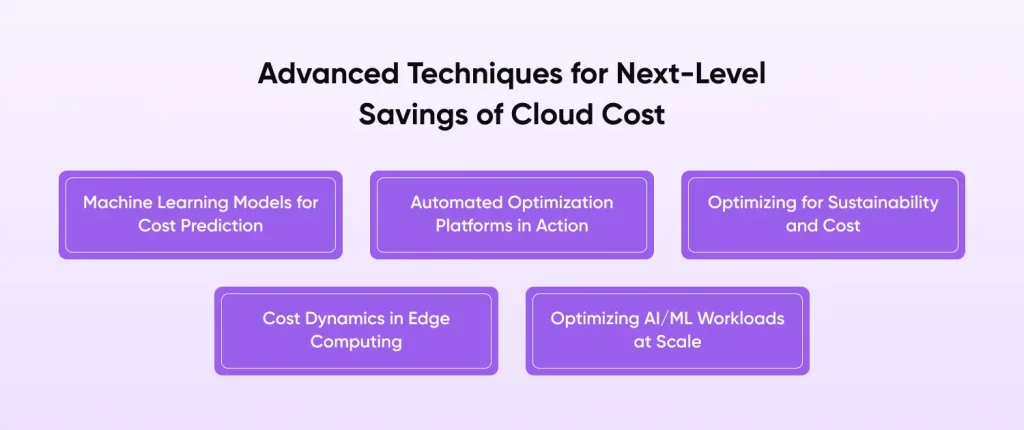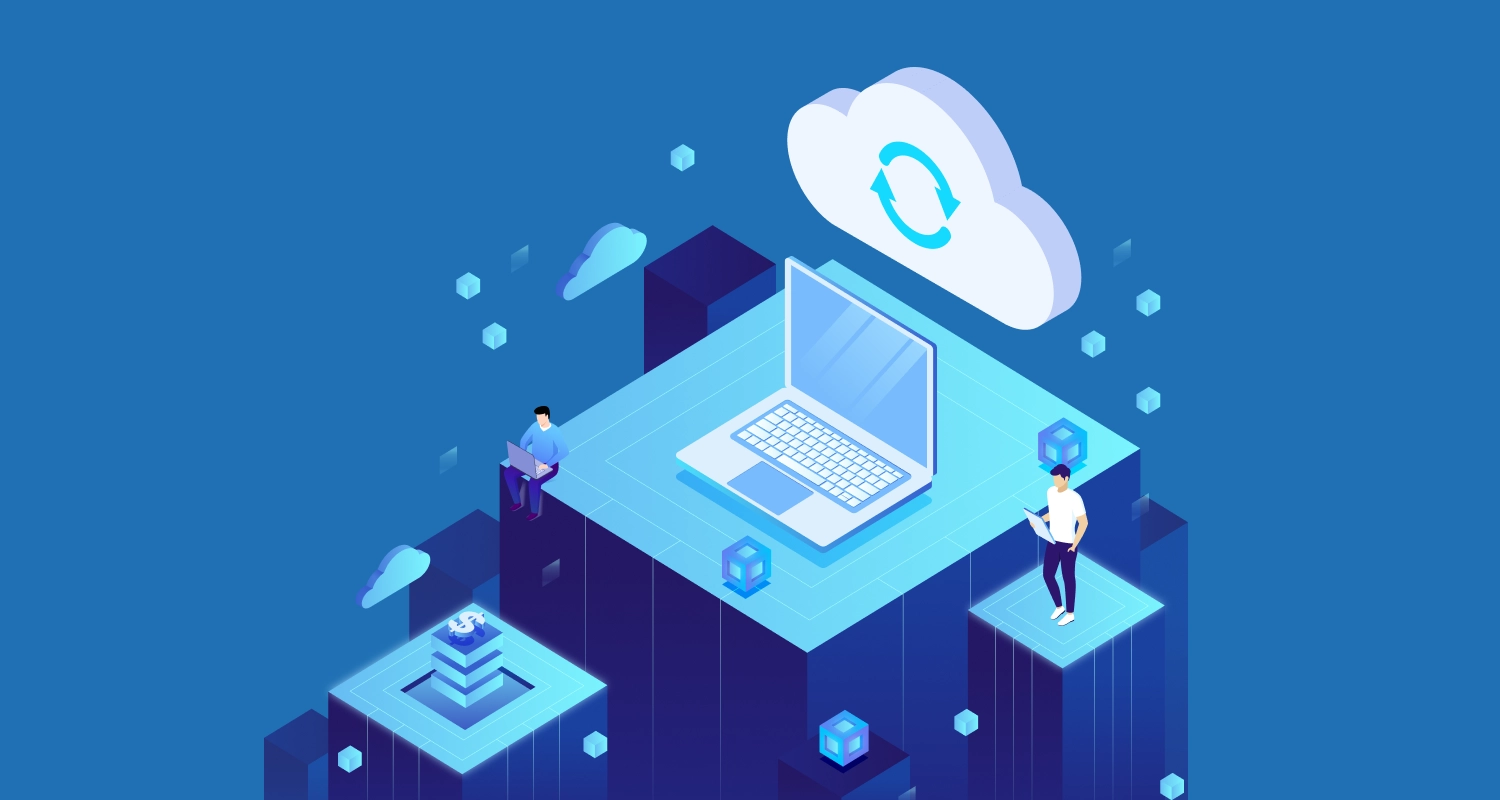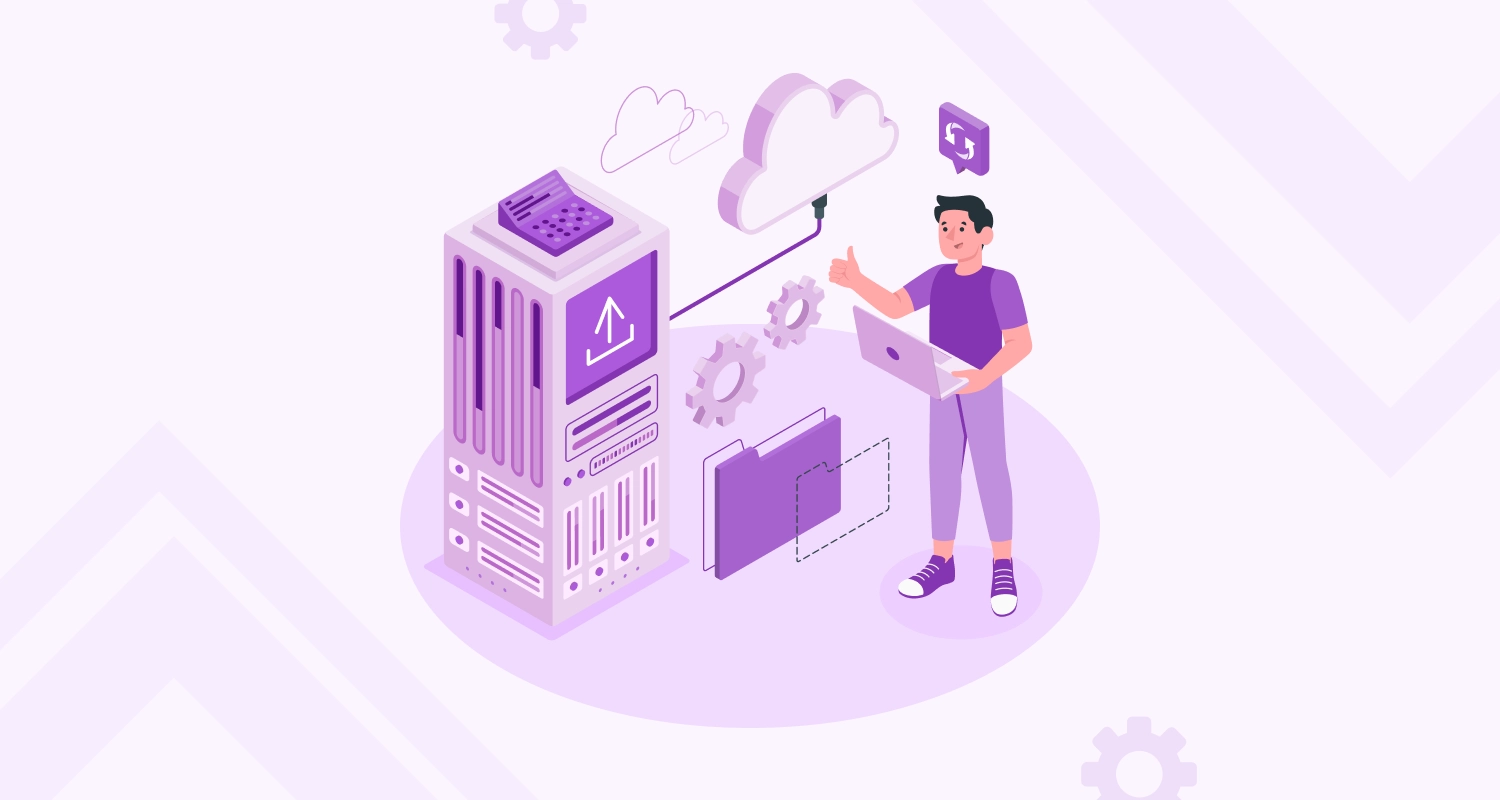Quick Summary: Managing cloud costs doesn’t have to feel stressful. With the right cloud cost optimization strategies, you can cut waste, boost agility, and free up budget for growth. This guide will show how smart businesses turn cloud spending into a real advantage, with insights you won’t want to miss.
Cloud spending has reached a breaking point for most organizations. Companies are burning through their cloud budget on resources they don’t actually need. That’s not just inefficient spending, it’s a strategic disaster waiting to happen. Worldwide end-user spending on public cloud services is forecast to total $723.4 billion in 2025, up from $595.7 billion in 2024, according to the latest forecast from Gartner, Inc.
Cloud cost optimization has evolved from a nice-to-have practice into a business-critical capability. Organizations that master cost control gain immediate competitive advantages. They can scale faster, experiment more, and respond to market changes without budget constraints holding them back.
The stakes have never been higher. Companies that ignore optimization face a double penalty, and they overpay for current resources while at the same time limiting their ability to invest in future growth opportunities.
The Shifting Dynamics of the Cloud Landscape
The cloud ecosystem has fundamentally transformed. What started as simple lift-and-shift migrations has become a complex multi-provider environment with hundreds of service options and pricing models.
The shift to hire cloud developers has accelerated this trend. Development teams now provision resources directly, often without understanding the financial implications of their architectural decisions. This democratization of infrastructure creates agility but also introduces cost risks that compound quickly.
Core Principles of Cloud Cost Optimization
Cloud cost optimization is more than just turning off unused resources. It’s a continuous process. It involves aligning cloud usage with business goals. The objective is to get more value from your cloud investment. This requires a cultural shift. It means everyone must be aware of the cost. It’s a shared responsibility across the organization.
The Five Pillars of Cloud Cost Optimization
These five pillars form the foundation of any successful cloud cost optimization best practices implementation.
| Concept | Description |
| Rightsizing | Matching resources to actual demand rather than theoretical peak needs. Requires continuous monitoring and adjustments based on real usage patterns. |
| Increased Elasticity | Dynamically scaling resources based on demand. Includes predictive scaling, scheduled scaling, and workload-aware resource management beyond basic auto-scaling. |
| Reserved Instances | Cost-effective option for predictable workloads. Requires analyzing 12–18 months of usage to identify steady-state requirements. |
| Pricing Model Selection | Choosing the right pricing approach per workload: Spot instances for fault-tolerant batch jobs, Reserved capacity for steady operations, On-demand for unpredictable spikes. |
| Continuous Monitoring | Enables visibility for optimization. Goes beyond basic usage tracking to include cost attribution, anomaly detection, and trend analysis. |
FinOps: Aligning Finance and Technology for Smarter Decisions
FinOps, or Cloud Financial Operations, is the modern approach to cloud spending. It’s a practice that brings together finance, engineering, and business teams. They collaborate on data-driven decisions. FinOps creates a culture of ownership. It turns cloud decisions into shared responsibilities. It ensures that every team understands the financial impact of their choices. Cloud cost optimization best practices through FinOps frameworks have become essential for organizations seeking sustainable growth.
Proven Strategies to Reduce Cloud Costs
Automating Governance and Policy-Based Controls
A proactive approach to cloud cost optimization includes setting up automated rules and policies. Instead of depending on manual efforts, you can establish governance frameworks that automatically implement your cost-saving rules. This strategy shifts the focus from reactive cleanup to proactive prevention, making sure that cost-conscious decisions are baked into your cloud operations from the start.
Unlocking Discounts: Spot Instances, RIs, and Savings Plans
Cloud providers give significant discounts. Spot instances are unused capacity. They are great for fault-tolerant workloads. Reserved Instances(RIs) provide a discount for a one or three-year commitment. Implementing these cloud optimization best practices can lead to massive savings and help reduce cloud costs across your entire infrastructure.
Eliminating Waste: Idle Resources and Policy-Driven Governance
Idle resources are a massive source of waste. This includes unattached storage volumes or forgotten servers. Businesses must create policies to clean them up. Automation can handle this process. Tagging resources is key to this effort. It helps in finding what belongs to which team or project. A strong governance framework prevents future waste.
Automation and AI-Powered Cost Controls
Automation is crucial for effective cloud cost optimization automation. Scripts can automatically shut down non-production environments after hours. They can also resize resources based on usage patterns. AI-powered tools can analyze huge amounts of data. They can predict future spending and help in identifying anomalies. This moves you from reactive to proactive.
Optimizing Storage and Data Transfers
Choosing the right storage tier is important. Archival data shouldn’t be in a high-performance tier, and data transfer costs can also add up. This happens especially between different clouds or regions. You must design architectures to minimize this. These small changes can result in big savings. To build these efficient systems, you need a highly skilled team. Hence, it is advisable to hire cloud developers or hire AWS developer.
Advanced Techniques for Next-Level Savings of Cloud Cost

Machine Learning Models for Cost Prediction
Simple monitoring looks at the past. Machine learning looks at the future. ML models can analyze usage data. They can forecast future cloud bills with high accuracy. This helps with predicting and budgeting. It allows for proactive adjustments before costs get out of hand.
Automated Optimization Platforms in Action
Advanced tools automate the entire optimization process. They use AI to analyze usage. Then they apply an optimization process. This can include rightsizing, shifting workloads, and turning off instances. They provide cloud cost optimization automation at scale.
Optimizing for Sustainability and Cost
Nowadays, sustainability is a growing concern. Did you know it’s linked to cost? Energy consumption directly impacts your cloud bill. Thus, more efficient resources use less power. This lowers your carbon footprint and your expenses. Choosing a provider with a green infrastructure can also lower costs. It’s a win-win for the planet and your budget.
Cost Dynamics in Edge Computing
Edge computing is on the rise, as it processes data closer to its source. This reduces the latency. It also has unique cost dynamics. Costs are driven by data processing at the edge. They also include data transfer back to the core cloud. Managing these dispersed costs is a new challenge.
Optimizing AI/ML Workloads at Scale
AI and ML workloads are computationally intensive. They can be very expensive, thus, optimizing them is important. This includes using the right hardware for each task. It also means using spot instances for training models. Cloud cost optimization strategies must include these specialized workloads.
Multi-Cloud and Hybrid Cloud Optimization Management
Unified Platforms for Centralized Cost Management
Many organizations use multiple cloud providers. This is a multi-cloud management strategy. Managing costs across different vendors is difficult. Each has its own billing systems and tools. Unified platforms solve this; they provide a single dashboard for all cloud spending.
Smart Workload Distribution Across Providers
With a multi-cloud setup, you can place workloads where they make sense. You can put some in a cheaper region. You can run others on a provider with better pricing for a specific service. Smart workload distribution is key. It lets you leverage competitive pricing.
Frameworks for Billing Transparency and Allocation
Billing transparency is important in a multi-cloud environment. You need to know who is spending what. You must allocate costs back to teams and projects. Tagging and consistent naming conventions are essential. A good framework makes sure every dollar is accounted for.

Top 7 Cloud Cost Optimization Tools
1. AWS Cost Explorer
A free AWS-native tool that provides reporting, cost tracking, and forecasting. It helps you break down spending by region, service, or usage type and allows budget alerts for cost control.
2. Microsoft Azure Cost Management and Billing
A built-in Azure solution for managing cloud expenses. It helps users create budgets, monitor current spending, and optimize costs with detailed usage insights.
3. CloudZero: Real-Time Cost Intelligence
CloudZero focuses on tying your cloud spend directly to business outcomes. It helps you understand the cost of a specific customer, a new product feature, or a specific team, making cost a core part of engineering decisions.
4. Vantage: Unified Cloud Cost Visibility and Optimization
It excels at providing a unified view of your entire cloud footprint. Vantage’s clean interface makes it easy for anyone to monitor spending across major providers, ensuring you have a clear picture of your budget.
5. FinOut: Bridging Financial and Operational Data
Finout is for businesses with complex, shared-cost environments. It helps allocate and analyze spending from your cloud providers alongside SaaS and third-party services, giving you a complete “Megabill.”
6. Kubecost: Specializing in Kubernetes Cost Monitoring
Kubecost is the go-to solution for Kubernetes users. It provides real-time cost visibility at the pod and namespace level, allowing developers to build more cost-efficient containerized applications.
7. ProsperOps: Fully Autonomous Cloud Savings
ProsperOps gives a unique approach by automating the management and purchase of discount programs. It takes the manual effort out of Reserved Instances and Savings Plans, ensuring you get the maximum possible savings without the risk of over-commitment.
| Tool | Key Features | Applications |
| AWS Cost Explorer |
|
|
| Microsoft Azure Cost Management |
|
|
| CloudZero |
|
|
| Vantage |
|
|
| Finout |
|
|
| Kubecost |
|
|
| ProsperOps |
|
|
Essential Cloud Optimization Best Practices
Establishing Monitoring and Governance Frameworks
You must create a framework for long-term success. This begins with visibility; you need real-time monitoring of your spending. Set up budgets and alerts for overages. Governance policies can prevent uncontrolled spending. And for better results and understanding, you must invest in cloud application development.
Building a Culture of Cost Awareness Across Teams
Cost awareness is not just an IT problem. Everyone must be involved. Engineers, finance teams, and project managers should all care about the cloud bill. You can achieve this with regular training and transparent reporting. It’s a key part of cloud cost management best practices.
Automating Spot Instance and RI Utilization
Automation takes the guesswork out of these complex decisions. Scripts can automatically use spot instances. They can also recommend reserved instances. This makes sure you always get the best price.
Training and Upskilling Teams for Cloud FinOps
A strong FinOps culture needs skilled people. You must train your teams. They need to understand financial models. They should also understand cloud technology. This upskilling is an investment. It pays off with smarter decisions and lower costs. Organizations that successfully reduce cloud costs through comprehensive training programs consistently outperform those that rely solely on tools and automation.
Automate Off-Hour Shutdowns
Non-production environments often run 24/7. This is a huge waste. You can automate their shutdown after business hours. A simple script can save a lot of money. You only pay for what you use.
Future Trends in Cloud Cost Management
AI-Driven Cloud Cost Management
Artificial intelligence (AI) will play a crucial role in the future. It will move from simple recommendation to full automation. It will analyze complex patterns and will make real-time decisions on pricing. This will lead to true autonomous optimization.
Evolving Multi-Cloud Sophistication
Multi-cloud will become even more common. Tools will become more sophisticated. They will offer seamless management. They will also provide automated workload placement. This will maximize efficiency across providers.
Intelligent Cloud Migration Planning
Cloud migration strategies will become more data-driven and cost-conscious. Future migration tools will analyze workload patterns, predict post-migration costs, and recommend optimal timing and resource allocation.
Sustainable Cloud Operations
Sustainability will become a core metric. Businesses will track their carbon footprint alongside costs. Cloud providers will compete on their green credentials, which will drive further innovation in efficiency.
FinOps Maturity Models
FinOps is an evolving discipline. Maturity models will help organizations. They will show you where you are. They will also provide a clear path forward. This will help you build a mature FinOps practice.
Next-Gen Tool Ecosystem
The tools will become more specialized. They will integrate with each other. This will create a powerful ecosystem. They will offer granular insights into your spending. They will also provide automated controls.
Why Choose CMARIX for Optimizing Your Cloud Cost
CMARIX delivers proven cloud cost optimization services through a complete FinOps-led approach that embeds cost accountability across your entire organization. We transform budget burden into a competitive advantage through measurable, sustainable savings that protect performance while driving long-term value.
What sets us apart is our integrated approach that combines four critical elements:
- Holistic, FinOps-Led Approach: We embed FinOps principles into your organization, encouraging a culture of shared responsibility and data-driven decision-making.
- Deep Multi-Cloud Expertise: Our team has extensive expertise across all major platforms, including AWS, Azure, and Google Cloud, enabling us to provide strategic solutions tailored to your multi-cloud environment.
- Automation & AI-Powered Optimization: We go beyond manual recommendations by implementing automated and AI-driven solutions for proactive cost management and anomaly detection.
- Proven Track Record: CMARIX delivers measurable, sustainable savings by implementing best practices that result in immediate and long-term cost reductions without compromising performance.
Final Words
Cloud spending is a top concern; it can limit innovation and growth. A strong cloud cost optimization strategy is important. It’s not a one-time project, but it’s an ongoing practice. It requires an integration of technology, people, and processes. It must be a priority for everyone. Begin with visibility, get a clear picture of your current spending. Then, focus on the five pillars. Rightsizing, elasticity, and discounts are your first steps.
As you mature, adopt FinOps principles. Invest in automation and AI-driven tools. Build a culture of cost awareness. This roadmap will help you achieve sustainable savings. It makes sure your cloud investment delivers maximum value. This is one of the benefits of cloud computing technology that makes this whole process even smoother.
FAQs for Cloud Cost Optimization
What Is Cloud Cost Optimization, and Is It Important in 2026?
Cloud cost optimization is an important process of reducing cloud expenses while maintaining performance through rightsizing, automation, and intelligent resource management. It’s critical in 2026 because organizations waste billions on unused resources, making optimization essential for competitive advantage.
What Are the Five Pillars of Cost Optimization in Cloud Computing?
Cloud cost optimization relies on rightsizing, elastic scaling, reserved instances, smart pricing model choices, and continuous monitoring for ongoing efficiency.
How to Reduce AWS/Azure/Google Cloud Costs?
Begin by eliminating idle resources, using spot instances for fault-tolerant workloads, and implementing automated scaling policies. Apply reserved instances for steady-state operations and optimize storage tiers based on access patterns.
What Role Does FinOps Play in Cloud Cost Optimization?
FinOps bridges finance and technical teams by creating shared responsibility for cloud spending decisions. It establishes cost accountability and makes sure optimization decisions consider both technical requirements and business outcomes.
How Do AI and Machine Learning Impact Cloud Cost Management?
AI empowers predictive cost forecasting, intelligent resource optimization that adapts to changing patterns, and automated anomaly detection. Machine learning algorithms identify optimization opportunities and implement cost-saving measures automatically while maintaining performance standards.







